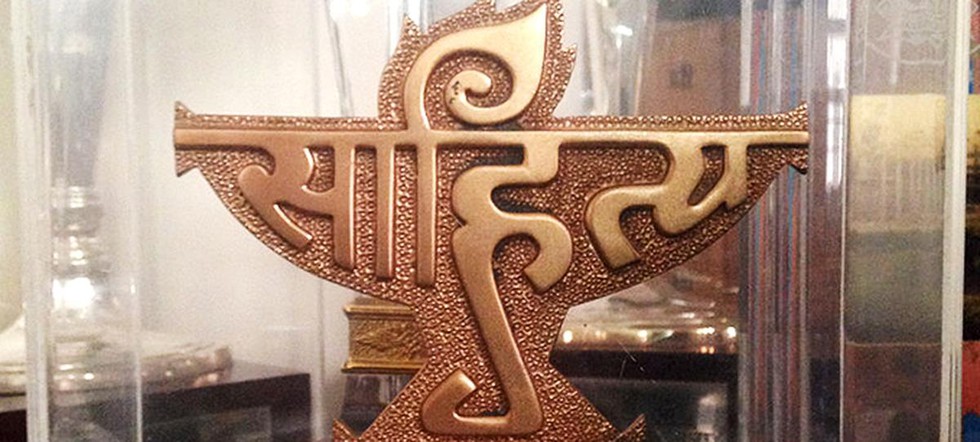
About Sahitya Akademi Yuva Puraskar:
- It was first instituted in 2011.
- It is presented annually to best literary creations by the young writers of age 35 or below in all the 24 recognized languages.
- The Yuva Puraskar is conferred on eligible young writers for creative original works.
- It is the only Akademi award open for nominations by publishers and self-nominations by writers.
- The Yuva Puraskar comprises a plaque, shawl, citation and a cheque for Rupees Fifty Thousand (₹ 50,000).
- A posthumous publication is not eligible for Award.
Key points about the Sahitya Akademi
- It was formally inaugurated by the Government of India on 12 March 1954.
- Sahitya Akademi, India's National Academy of Letters, is the central institution for literary dialogue, publication and promotion in the country and the only institution that undertakes literary activities in 24 Indian languages, including English.
- Though set up by the Government, the Akademi functions as an autonomous organisation.
- It was registered as a society under the Societies Registration Act, 1860.
2. Krishi Sakhi Convergence Programme
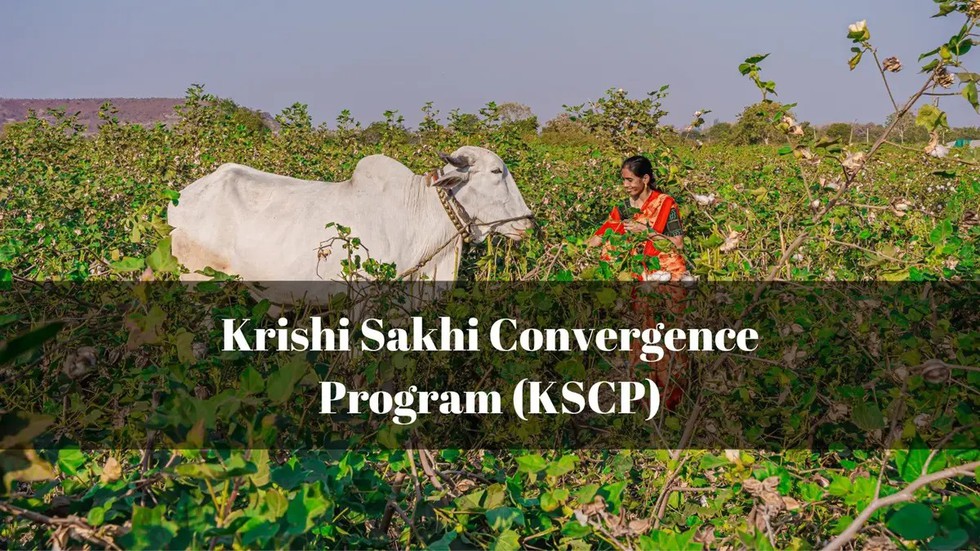
About Krishi Sakhi Convergence Program:
- It aims to transform rural India through the empowerment of rural women as Krishi Sakhi, by imparting training and certification of Krishi Sakhis as Para-extension Workers.
- This certification course also aligns with the objectives of the ‘Lakhpati Didi’ Program.
- Krishi Sakhis have already been trained on various extension service
- Agro-Ecological Practices: From land preparation to harvest.
- Organizing Farmer Field Schools: Facilitating practical learning sessions for farmers.
- Seed Banks: Establishment and management.
- Soil Health and Conservation: Techniques for maintaining soil health and moisture.
- Integrated Farming Systems: Combining various farming practices for sustainability.
- Livestock Management: Basic management practices for livestock.
- Bio Inputs: Preparation, use, and establishment of bio-input shops.
- Communication Skills: Essential skills for effective communication with farmers.
- Now these Krishi Sakhis are undergoing refresher training with a special focus on Natural Farming and Soil Health Card through DAY-NRLM agencies in coordination with MANAGE.
- Krishi Sakhi Training Program has been rolled out in 12 states in Phase – 1: Gujarat, Tamil Nadu, Uttar Pradesh, Madhya Pradesh, Chhattisgarh, Karnataka, Maharashtra, Rajasthan, Odisha, Jharkhand, Andhra Pradesh, and Meghalaya.
3. Bitumen
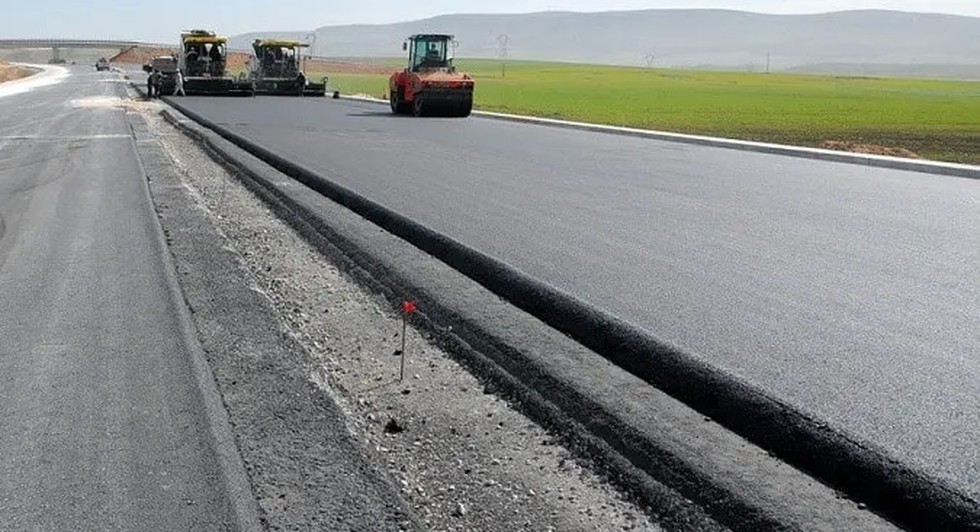
About Bitumen:
- It is a dense, highly viscous, petroleum-based hydrocarbon.
- It is found in deposits such as oil sands and pitch lakes (natural bitumen) or is obtained as a residue of the distillation of crude oil.
- Composition
- It owes its density and viscosity to its chemical composition—mainly large hydrocarbon molecules known as asphaltenes and resins, which are present in lighter oils but are highly concentrated in bitumen.
- In addition, bitumen frequently has a high content of metals, such as nickel and vanadium, and nonmetallic inorganic elements, such as nitrogen, oxygen, and sulfur.
- Applications:
- It is known for its waterproofing and adhesive properties and is commonly used in the construction industry, notably for roads and highways.
- It is commonly used to waterproof boats and other marine vessels.
- It is also used by companies that create and manufacture roofing products.
- It is used for sealing and insulating purposes in various building materials such as carpet tile backing and paint.
What is Bio-bitumen?
- It is a petroleum-free alternative to bitumen, or asphalt.
- It’s made using non-petroleum-based renewable resources and can be made from vegetable oils, synthetic polymers, or both, making it a more sustainable model long term.
4. Streptococcal Toxic Shock Syndrome (STSS)

About Streptococcal Toxic Shock Syndrome (STSS):
- It is a rare but severe bacterial infection caused by group A Streptococcus bacteria.
- It occurs when these bacteria enter deep tissues and the bloodstream, releasing toxins that cause a rapid and dangerous response in the body.
- Symptoms
- It starts with initial symptoms like fever, chills, muscle aches, nausea and vomiting. Within 24 to 48 hours, it can lead to low blood pressure, organ failure, rapid heart rate and fast breathing.
- Group A Streptococcus (GAS) usually causes strep throat in children, but in adults it can lead to serious symptoms like limb pain, swelling, fever and low blood pressure.
- This can quickly worsen to tissue death, breathing problems, organ failure and sometimes death, especially in people over 50.
- How does it spread?
- It can be quite contagious and can spread the bacteria to others through respiratory droplets or direct contact.
- Group A strep bacteria can also spread through food, if it is not handled properly.
- Prevention
- Preventing STSS involves practising good hygiene, like washing hands regularly and covering your mouth while you cough and sneeze.
5. What is Double Sun halo?

- It is a rare optical phenomenon where two concentric rings appear around the sun.
- This occurs when sunlight is refracted through ice crystals suspended in cirrus clouds, creating this dazzling visual effect.
- It is a variation of the more common 22-degree halo, where a bright ring encircles the sun.
- In this case, two halos are visible - an inner halo with a radius of approximately 22 degrees and an outer halo with a radius of around 46 degrees from the sun's center.
- Formation:
- The formation of a double sun halo is a result of the unique shape and orientation of the ice crystals in the cirrus clouds. These crystals, typically hexagonal in shape, act as natural prisms, refracting and reflecting the sunlight in specific angles.
- When the ice crystals are randomly oriented, the refracted sunlight creates the inner 22-degree halo. However, if the crystals are aligned horizontally, with their flat faces parallel to the ground, an additional refraction occurs, resulting in the outer 46-degree halo.
- This precise alignment of the ice crystals is rare, making the double sun halo a relatively uncommon sight, especially in regions like Ladakh, where the atmospheric conditions are ideal for such phenomena.
6. Key Facts about Nalanda University
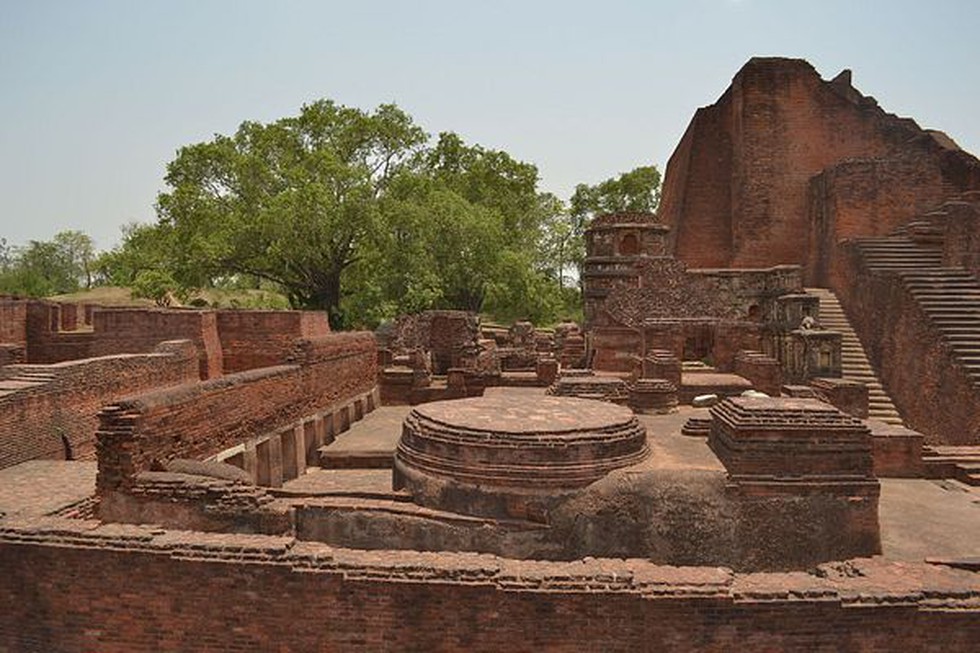
About Nalanda University:
- Nalanda stands out as the most ancient university on the Indian Subcontinent.
- It was founded by Kumargupta of the Gupta dynasty in Bihar in the early 5th century, and it flourished for 600 years until the 12th century.
- During the era of Harshavardhan and the Pala monarchs, it rose to popularity.
- It was a center of learning, culture, and intellectual exchange that had a profound impact on the development of Indian civilization and beyond.
- Nalanda was a monastic establishment in the sense that it was primarily a place where monks and nuns lived and studied. It used to teach all the major philosophies of Buddhism.
- It had students from far-flung regions such as China, Korea, Japan, Tibet, Mongolia, Sri Lanka, and Southeast Asia.
- The students at Nalanda were expected to follow a strict code of conduct and were required to participate in daily meditation and study sessions.
- Subjects such as medicine, the ancient Indian medical system Ayurveda, religion, Buddhism, mathematics, grammar, astronomy, and Indian philosophy were taught there.
- It continued to be a centre of intellectual activity up until it was destroyed in the 12th century AD, in 1193, by Turkish ruler Qutbuddin Aibak's general Bakhtiyar Khilji.
- After six centuries, the university was rediscovered in 1812 by Scottish surveyor Francis Buchanan-Hamilton and later identified as the ancient university by Sir Alexander Cunningham in 1861.
- The Chinese monk Xuan Zang has offered invaluable insights into the academic and architectural grandeur of ancient Nalanda.
- It is also a UNESCO World Heritage Site.
7. What is Ophichthus Suryai?
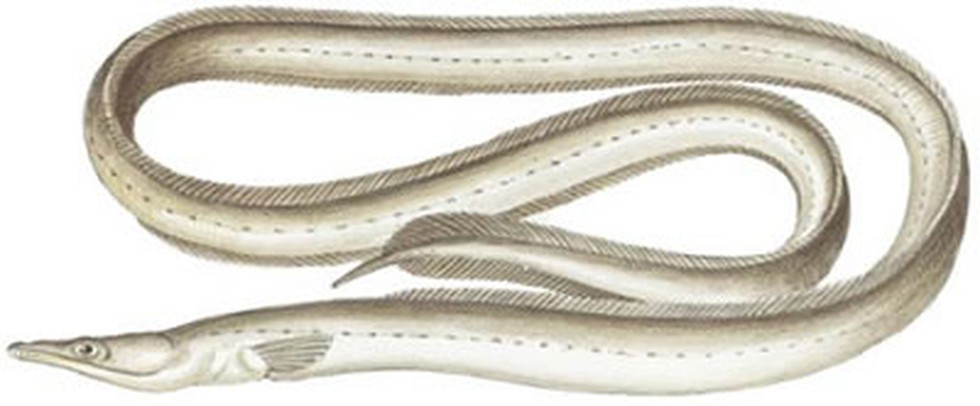
About Ophichthus Suryai:
- It is a new species of snake eel discovered from Odisha.
- The new species can be distinguished from its closely allied congeners Ophichthus alleni, Ophichthus zophistius, and Ophichthus altipennis, and other members in this genus by
- having the dorsal fin origin (DFO) just above or slightly anterior to the gill opening
- its unique vertebral count and teeth patterns consisting of multiple rows on both maxilla and mandible
What is a Snake eel?
- A snake eel is any of numerous marine fishes in the family Ophichthidae (order Anguilliformes).
- The eels are often mistaken for sea snakes by humans.
- Usually, the eels are found in warm, tropical waters.
- Most species live and hide in material at the bottom of rivers or the sea.
- A snake eel can survive at depths of more than 2,000 feet (around 600 meters), but often live in water much shallower than this.
- The size of a snake eel varies greatly, depending on the species, with some growing as long as 10 feet (about 3 meters).
- If the cross section of a snake eel were examined, it would be almost circular.
- Other features include a scaleless body, small eyes, and a pointed snout.
- A snake eel’s diet consists mainly of small fish. They are also known to feed off crustaceans.
8. Ghaggar River
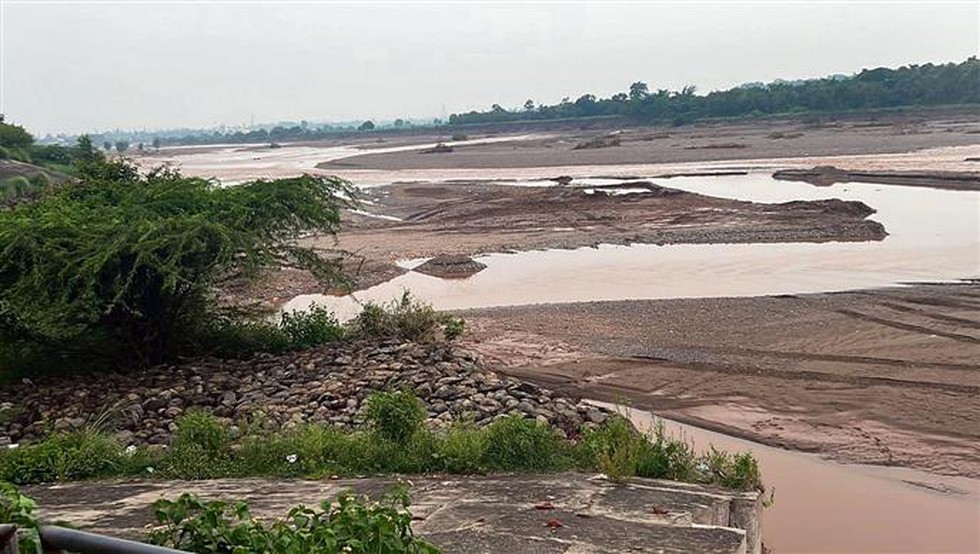
About Ghaggar River:
- It is a seasonal river that flows only during the monsoon season.
- Course:
- It rises from the Shivalik Range in northwestern Himachal Pradesh.
- The river then flows about 200 miles (320 km) southwest through Haryana state to meet the River Saraswati.
- It eventually dries up in the Thar Desert in Rajasthan.
- This seasonal river feeds two irrigation canals that extend into Rajasthan.
- The Hakra, which flows in Pakistan, is the continuation of the Ghaggar River in India, and they are together called the Ghaggar - Hakra River.
- Historical Significance:
- Several historians identify Ghaggar with the Vedic Saraswati River.
- Along the banks of the Ghaggar River, many settlements of the Indus Valley Civilizationhave been excavated.
- Hence, it is believed that the ancient settlements on its banks were the creation of ingenious Vedic Aryans.
- It is believed that the rivers Sutlej and Yamuna once flowed into the Ghaggar-Hakra river bed.
- Tributaries: The main tributaries of the Ghaggar are the Kaushalya River, Markanda, Sarsuti, Tangri, and Chautang.
9. Ghodbunder Fort
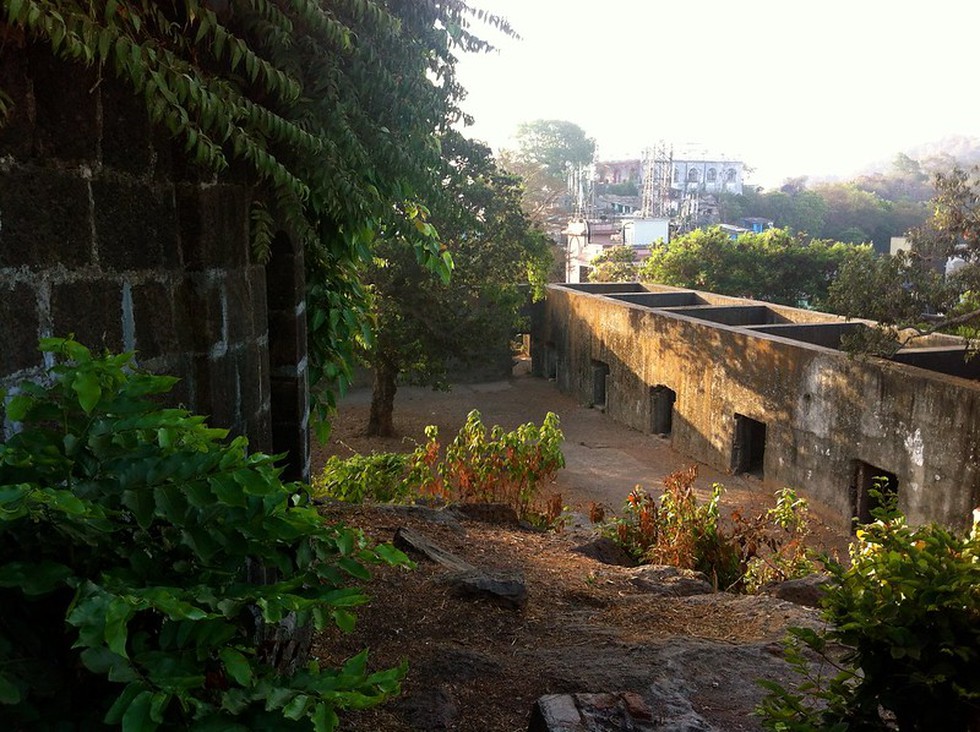
About Ghodbunder Fort:
- It is a hill fort located in Ghodbunder Village, Thane, Maharashtra.
- It is situated on the banks of the Ulhas River.
- History:
- It was originally built by the Portuguese and completed in 1730.
- The place derives its name from two words: Ghod, meaning horses, and bunder, meaning Fort.
- The fort derived this name because it was initially used by the Portuguese to trade their horses with the Arabs.
- Later, the fort was conquered and occupied by the Marathas.
- In 1818, the British took over this fort, and the British East India Company started using it as its district headquarters.
- The fort was constructed from stones carved out of the very mountains and joined with the help of lime, rubble, gravel, stones, molten metal, and sand.
- The fort consists of a Portuguese church built in the early 16th century AD.
- There are also several mansions and rooms which throw light on the Maratha rule.
10. What is Lok Adalat?

About Lok Adalat:
- It is one of the alternative dispute redressal mechanisms in India.
- It is a forum where disputes/cases pending in the court of law or at the pre-litigation stage are settled/compromised amicably.
- The Lok Adalat has been given statutory status under the Legal Services Authorities Act, 1987.
- Lok Adalats can be organized at the district, state and national levels.
- The State/District Legal Services Authority or the Supreme Court/High Court/Taluk Legal Services Committee may organise Lok Adalat at such intervals and places and for exercising such jurisdiction and in such areas as it thinks fit.
- Every Lok Adalat organised for an area shall consist of such number of serving or retired judicial officers and other persons of the area as may be specified by the agency organizing.
- Generally, a Lok Adalat consists of a judicial officer as the chairman and a lawyer (advocate) and a social worker as members.
- Under the Legal Services Authorities Act, 1987, Lok Adalat can make awards/decisions, which are deemed to be a decree of a civil court and are final and binding on all the parties concerned.
- If the parties are not satisfied with the award of the Lok Adalat, there is no provision for an appeal against such an award, however, the parties concerned can initiate litigation by approaching the court of the appropriate jurisdiction by filing a case.
- There is no court fee payable when a matter is filed in a Lok Adalat.
- If a matter pending in the court of law is referred to the Lok Adalat and is settled subsequently, the court fee originally paid in the court on the complaints/petition is also refunded back to the parties.
- Dispute resolution in the Lok Adalat courts takes place by direct interaction of the Adalat members with the parties concerned.
- Lok Adalats possess jurisdiction over a diverse array of cases, including civil disputes, criminal cases (compoundable offences) and family matters.
- Nature of cases to be referred to Lok Adalat
- Any case pending before any court
- Any dispute which has not been brought before any court and is likely to be filed before the court
- Provided that any matter relating to an offence not compoundable under the law shall not be settled in Lok Adalat.
- Permanent Lok Adalat:
- The Legal Services Authorities Act, 1987, was amended in 2002 to provide for the establishment of the Permanent Lok Adalats to deal with cases pertaining to public utility services like transport, postal, telegraph, etc.
- These have been set up as permanent bodies and consists of a Chairman and two members
- It shall not have jurisdiction in respect of any matter relating to an offence not compoundable under any law.
- The jurisdiction of the Permanent Lok Adalats is upto Rs. 1 Crore.
- Before the dispute is brought before any court, any party to the dispute may make an application to the Permanent Lok Adalat for settlement of the dispute.
- After an application is made to the Permanent Lok Adalat, no party to that application shall invoke the jurisdiction of any court in the same dispute.
- Every award made by the Permanent Lok Adalat shall be final and binding on all the parties thereto and shall be made by a majority of the persons constituting the Permanent Lok Adalat.


























































































































































.png)
.png)
.png)
.png)
.png)


.png)
.png)
.png)





.png)
.png)






.png)
.png)
.png)
.png)
.png)
.png)
.png)
.png)
.png)

.png)







.png)
.png)


.png)
.png)
.png)


.png)

.png)
.png)





.jpg)

.png)
.png)


.png)

.png)
.png)
.png)

.jpg)

.jpg)


.png)

.png)
.png)
.png)
.png)
.png)
.png)
.png)
.png)
.png)
.png)




.png)

.png)





.png)
.png)
.png)
.png)
.png)
.png)
.png)
.png)
.png)
.png)
.jpg)
.jpg)

.png)
.png)
.png)
.png)
.png)
.png)
.png)
.png)
.png)
.png)
.png)
.png)
.png)
.png)
.png)
.png)
.png)
.png)
.png)
.png)
.png)
.png)



.png)
.png)

.jpg)
.jpg)


.jpg)
.jpg)
.jpg)
.jpg)
.jpg)

.jpg)








.jpg)
.jpg)
.jpg)
.jpg)
.jpg)

















.jpg)
.jpg)







.jpg)


















.jpg)
.jpg)






























































































.jpg)
.jpg)


























.jpg)

.jpg)










.jpg)








.jpg)




.jpg)










.jpg)


















.jpg)












































.jpg)














.jpg)
.jpg)
.jpg)





.jpg)

.jpg)
.jpg)





































































.jpg)


































.jpg)
.jpg)
















































.jpg)












.jpg)


.jpg)




.jpg)
.jpg)
.jpg)

.jpg)
.jpg)
.jpg)
.jpg)

.jpg)
.jpg)
.jpg)

.jpg)
.jpg)
.jpg)
.jpg)
.jpg)
.jpg)
.jpg)
.jpg)

.jpg)


.jpg)
.jpg)
.jpg)
.jpg)
.jpg)
.jpg)
.jpg)
.jpg)
.jpg)
.jpg)











.jpg)
.jpg)





.jpg)
.jpg)
.jpg)
























.jpg)
























.jpg)









.jpg)
.jpg)







.jpg)
.jpg)









































.jpg)
.jpg)
.jpg)
.jpg)
.jpg)

.jpg)
.jpg)
.jpg)
.jpg)
.jpg)


.jpg)
.jpg)
.jpg)
.jpg)
.jpg)

.jpg)
.jpg)
.jpg)
.jpg)
.jpg)
.jpg)
.jpg)
.jpg)
.jpg)
.jpg)
.png)

.png)
.png)

.png)
.png)
.png)
.png)


.jpg)
.jpg)

.jpg)
.jpg)
.jpg)

.png)
.png)
.png)
.png)
.png)
.png)
.png)

.png)
.png)
.png)
.png)
.png)
.png)
.png)
.png)
.png)
.png)





































































-min.png)



.png)




.png)








































